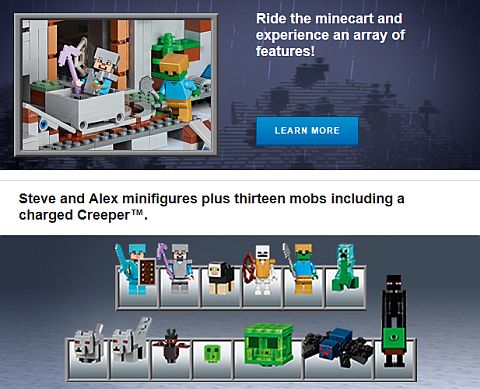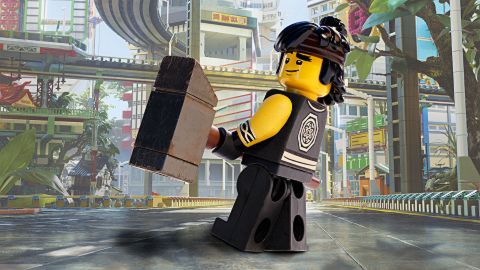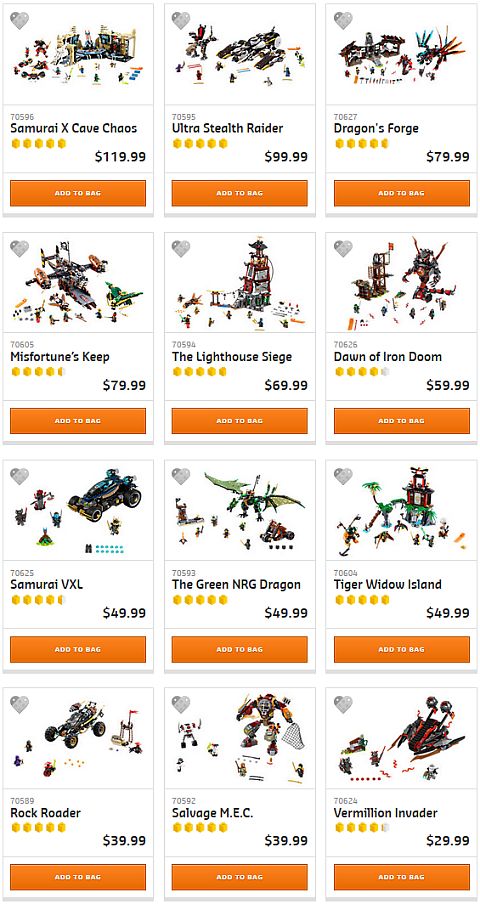Just a reminder that the #21137 LEGO Minecraft Mountain Cave set is now available for LEGO VIP members. General release is going to be next month. This is a massive set with over 2,860 pieces and the largest LEGO Minecraft set ever released. The set is also an excellent source of basic LEGO elements, including a large number of sand-green plates. Below is the full description and designer-video, so you can check it out in more detail. 🙂

Here is the official description: Build and experience the Mountain Cave, featuring an amazing minecart track with an integrated redstone‑powered minecart elevator, and an array of other features and functions, including TNT blasting, rotating spider‑spawner, charged Creeper explosion and a lava burst. Position the light-brick to illuminate the rotating spider-spawner, wall of redstone, jack o’lantern, first-night shelter, furnace, lava or the torch above the cave entrance. Enjoy hands‑on Minecraft adventures featuring your favorite characters and objects with this easy-to-reconfigure, modular LEGO Minecraft set designed for young fans of the highly successful sandbox video game. Includes Steve and Alex minifigures, plus 13 mobs; a cave spider, wolf, baby wolf, slime, 2 small slimes, 2 bats, zombie, enderman, skeleton, sheep and a charged Creeper. Measures over 12” (31cm) high, 20” (53cm) wide and 11” (29cm) deep. 2,863 pieces. Price: $249.99 – BUY HERE
As you can see, the set is huge, but also very stable due to the LEGO Technic frame and lots of basic LEGO elements that are solidly locked together. The rail and the elevator seems to be working well, and that big gaping cave inside looks like a fun place to play.

The large assortment of minifigures and mobs make this the ultimate LEGO Minecraft set, however if you want to, you can also connect it to other sets in the LEGO Minecraft collection for an even larger layout. And just like all previous LEGO Minecraft sets, the set is modular, so you can easily move pre-built sections around for a different look.

LEGO Minecraft is clearly very popular as evidenced by all the large sets that have been released in the past couple of years. So far we got the #21127 LEGO Minecraft The Fortress (984 pieces), the #21128 LEGO Minecraft The Village (1600 pieces). And there is also the upcoming #21136 LEGO Minecraft The Ocean Monument (1122 pieces), and of course the #21137 LEGO Minecraft The Mountain Cave. Plus a large number of small to medium sets as well. You can find all the currently available sets under the LEGO Minecraft section of the Online LEGO Shop.

What do you think? How do you like the LEGO Minecraft The Mountain Cave? Do you play the game? And do you have any of the other LEGO Minecraft sets? Feel free to share your thoughts and discuss in the comment section below! 😉
And you might also like to check out the following related posts:




















